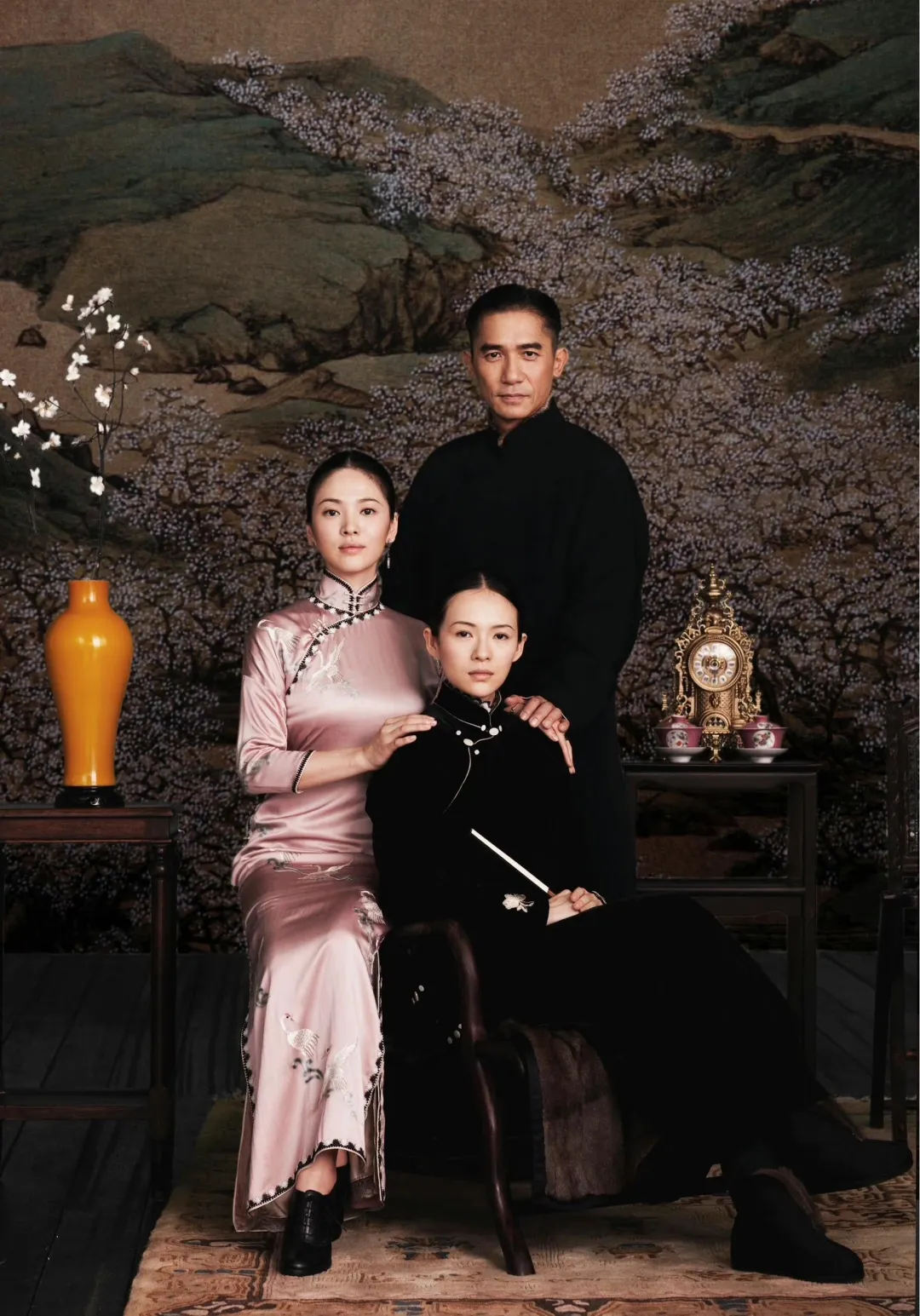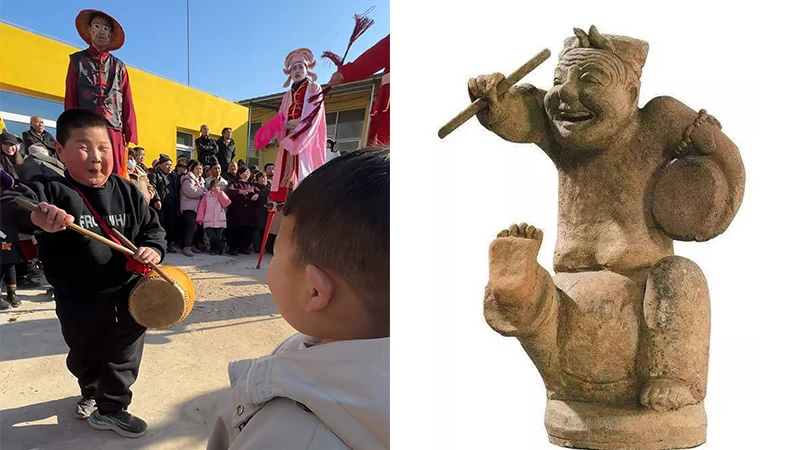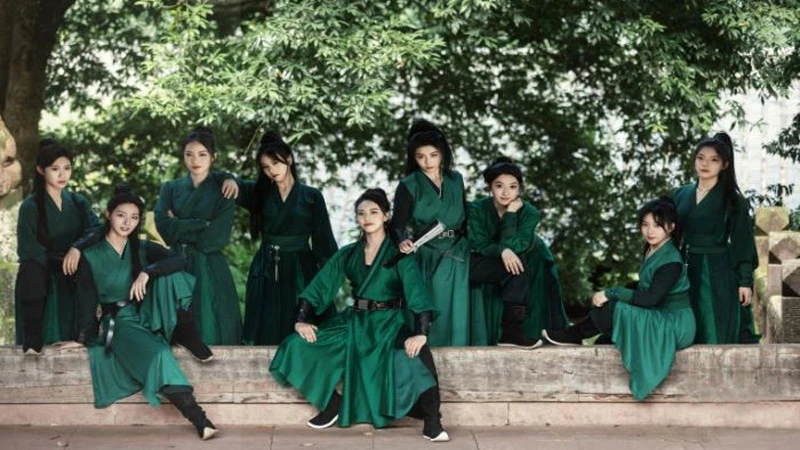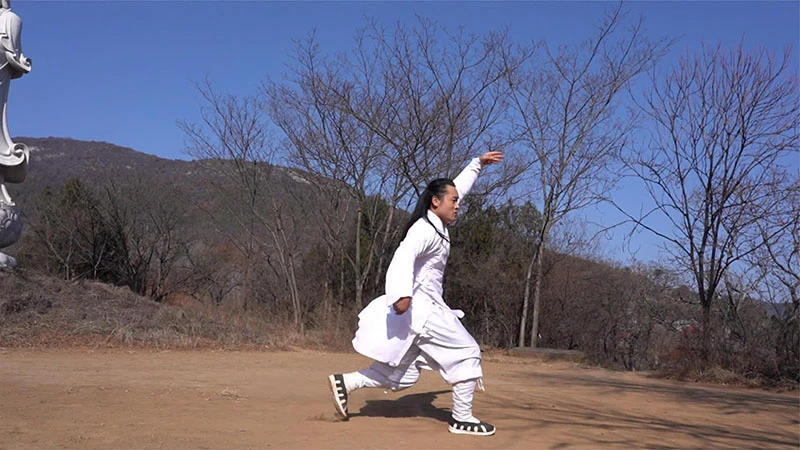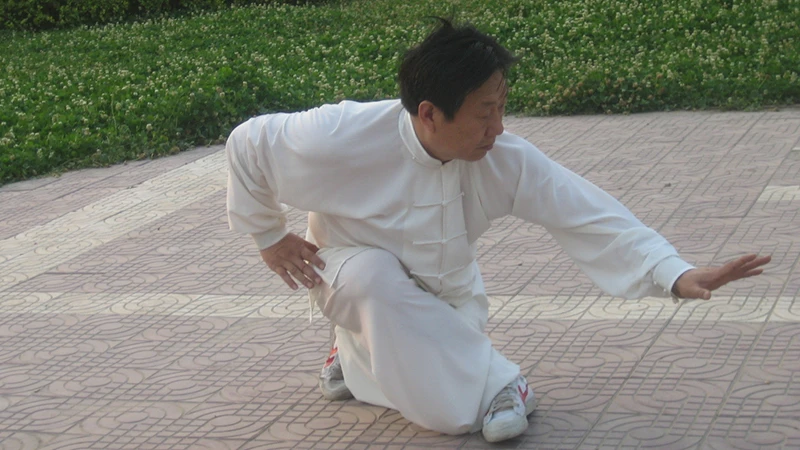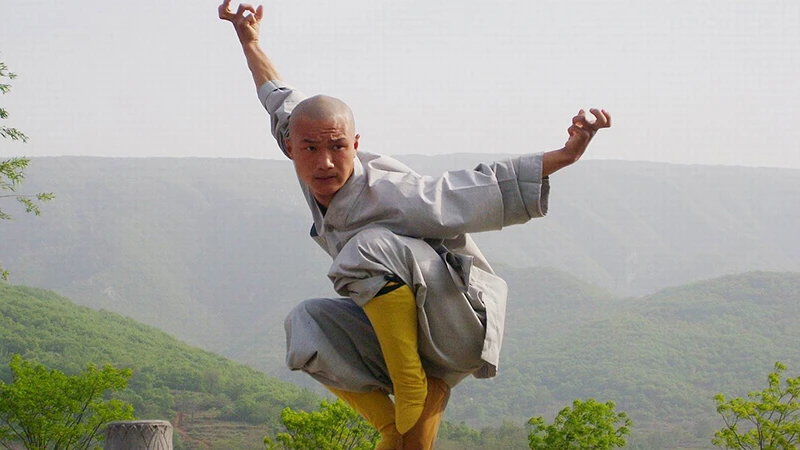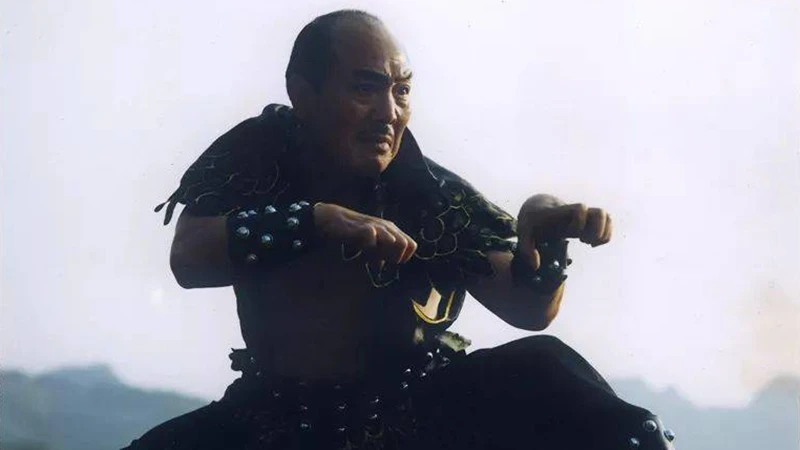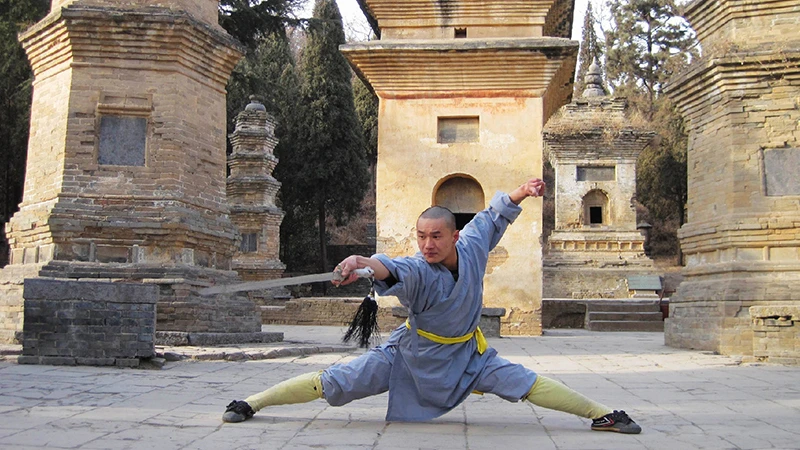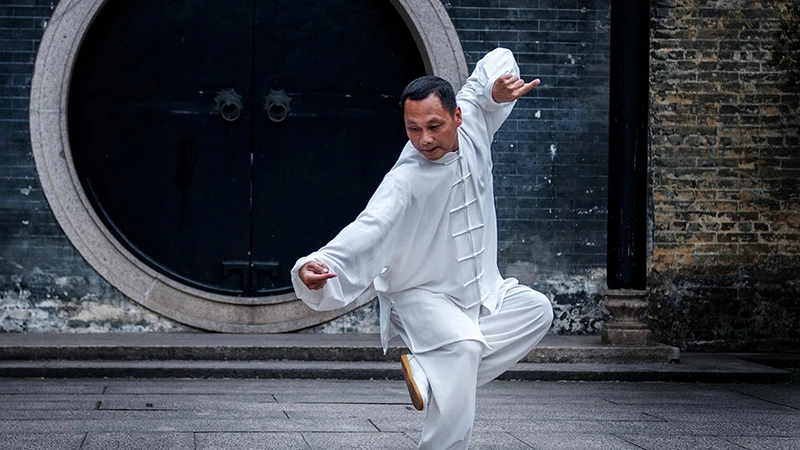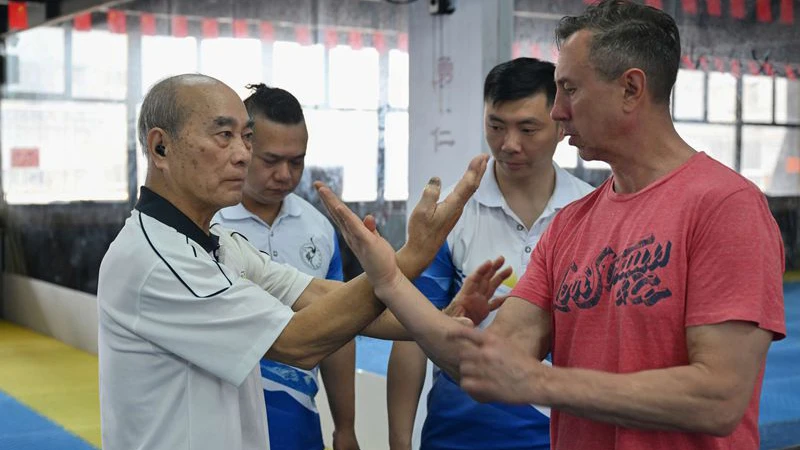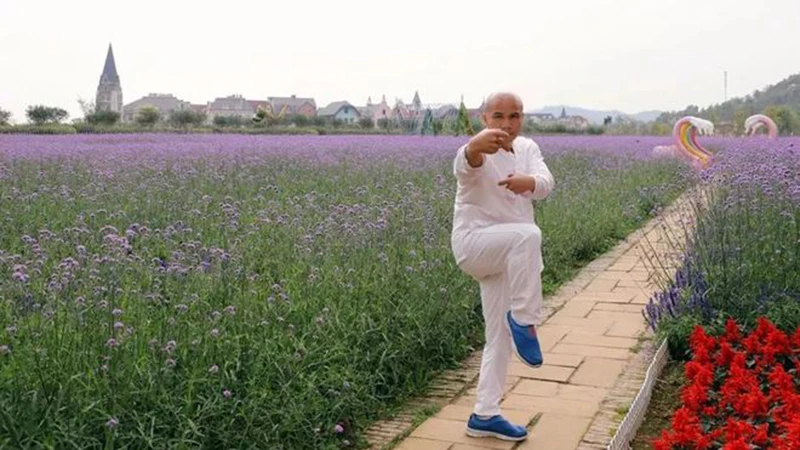-
The Golden Era of Kung Fu Cinema
Long before algorithms and virtual production dominated film sets, there existed a breed of storytellers who poured blood, sweat, and an unyielding love for martial arts into every frame. Among them stands Rigo (里戈), a name etched into the annals of kung fu cinema, and Yu Rongguang (于荣光), the actor-director whose voice now bridges past and future. In the heyday of classic kung fu films, Yu Rongguang was more than a performer - he was a custodian of tradition. Working alongside iconic directors and leading studios, he and his peers approached each project with the gravity of preserving a cultural legacy. “We staked our all to craft something unforgettable,” Yu reflects, his words carrying the weight of late-night rehearsals, bruised limbs, and the shared urgency of a generation determined to make kung fu not just a genre, but a global language. These were the days when every kick, every parry, and every emotional beat was honed through sheer physicality. Films like Once Upon a Time in China (黄飞鸿) and Crouching Tiger, Hidden Dragon (卧虎藏龙) had already planted kung fu’s flag on the world stage, but it was the unsung labor of artists like Yu - stunt coordinators, fight choreographers, and…- 0
- 0
- 16
-
The Master of Gong Er's Beijing-style Cheongsams
"There is a Western writer (was it Bernard Shaw?) who once complained that most women choose their husbands far less attentively and carefully than they choose their hats. Even the most heartless woman speaks with affection when she talks about 'that brocade-lined robe from last year.'" This passage is from Eileen Chang's Record of Changing Clothes, with Ms. Chang's usual sharp and incisive writing style and unique perspective. Women's love for clothes seems to be innate. The colors, patterns, and styles of clothes are not only a source of beauty in women's lives but also reveal the diverse and rich inner worlds of their souls. For women, clothes not only enhance and reflect beauty but also relate to a person's deeper inner operating rules and aesthetic creative desires. In other words, they are the visible external features of a person's inner self. This is true for people, and even more so for a film with extremely high artistic value. For a director like Wong Kar-wai, who has an almost extreme pursuit of audio-visual language, women's clothes are the second language in his films. So, in In the Mood for Love, the cheongsam is the most direct manifestation of Su Lizhen's…- 0
- 0
- 36
-
When Digital Native Kids Crave Retro Childhoods
In a village square in Shandong province, 11-year-old Huang Ruoxi stomps her feet with precision, sending reverberations through a set of drums arranged like celestial constellations. Her round cheeks flushed pink, two buns tied atop her head, she performs the Pan Drums Dance (盘鼓舞)—a 2,000-year-old Han Dynasty drum dance nearly lost to history. Meanwhile, 1,000 kilometers north in Hebei, 8-year-old Gao Haoran channels the spirit of Eastern Han storytellers, his comically exaggerated facial expressions and thunderous Martial Drumming (武鼓) drawing comparisons to China's iconic 2nd-century Shuochang Yong (说唱俑, Speaking and Singing Figurines). These children—dubbed "retro kids" by Chinese netizens—are sparking a cultural reckoning. Amid a sea of Gen Alpha peers glued to TikTok clones and mobile games, they've become unlikely ambassadors for traditions stretching back millennia. Social media floods with comments: "She's stepped straight out of a textbook illustration!" and "This kid's vibe is so…pre-2010s!" The phenomenon reveals a generational paradox. While China's youth are often stereotyped as digital natives addicted to virtual worlds, a growing cohort is reviving folk arts through school programs, family legacies, and yes—viral videos. UNESCO reports a 37% increase in China's intangible cultural heritage apprentices under 18 since 2020. From dragon dances in Guangdong to…- 0
- 0
- 66
-
Chinese Martial Arts' New Face Ignites Global Stage
China's strongest kids in the street dance scene The roar of the crowd at Paris' Bercy Arena was deafening. Under the bright lights of the 2025 Juste Debout World Street Dance Finals, spectators from around the world held their breath as two young Chinese dancers took the stage. But what followed was unlike anything seen before. Ten-year-old Song Haoming from Jiangsu and twelve-year-old Fu Junxi from Guangxi were about to make history. Blending the fluidity of Tai Chi with the explosive energy of Shaolin whirlwind kicks (少林旋风腿), they performed an electrifying routine that seamlessly fused traditional Chinese martial arts with contemporary street dance. With every precise movement—whether the open-handed elegance of Drunken Fist (醉拳) or the controlled power of Southern Fist (南拳)—they shattered expectations, redefining the boundaries of urban dance. In a competition where age holds no restrictions, the duo's "martial arts street dance" stunned audiences and led them past two foreign teams into the final four—an unprecedented achievement for Chinese contestants. Online reactions exploded: "Are all Chinese kids born as Jackie Chan?" "Chinese artistry is always mesmerizing!" "This dance was mesmerizing—I absolutely love it!" Meanwhile, Chinese netizens celebrated their success, dubbing them "China's strongest kids" in the street dance…- 0
- 0
- 105
-
Chen Master: The Modern Power of Tai Chi
As modern life speeds up, stress and challenges have become constants for people worldwide. Whether it’s work-related pressure, family responsibilities, or the overwhelming pace of technology, the need to find balance has never been more critical. One surprising solution to these modern woes is an ancient practice: Tai Chi. This traditional Chinese martial art offers a blend of physical and mental training that has become increasingly popular, not only in China but around the globe. More than just a martial art, Tai Chi embodies philosophical principles that harmonize body, mind, and spirit. In an era that demands both resilience and tranquility, Tai Chi provides a sanctuary of calm in the midst of chaos. On October 20th, in Wuhan, Chen Zhenglei (陈正雷), a revered 11th-generation successor of Chen-style Tai Chi and a national-level inheritor of China’s intangible cultural heritage, gathered with Tai Chi enthusiasts for a special performance and teaching event. At over seventy years old, Chen Zhenglei continues to dedicate his life to spreading Tai Chi’s teachings. Known as the "Golden King of Tai Chi" within martial arts circles, his mission is clear: to preserve and expand the influence of this cultural treasure for future generations. The art form was…- 0
- 0
- 67
-
Tai Chi Connects Community for Health and Harmony
Tai Chi in a Modern Community In a bustling world where health and wellness are increasingly valued, a recent event at the Changhai (长海) Road Community Center in Shanghai sought to merge traditional wisdom with community wellness. Themed "Healthy Shanghai, Boundless Tai Chi," this event invited Tai Chi enthusiasts Lu Xuejun (鲁学军) and Nie Yonggang (聂永刚) to bring the grace and philosophy of Yang-style Tai Chi to local residents, offering not only an introduction to the ancient art but also a hands-on wellness experience that bridges body, mind, and community. Tai Chi has long been celebrated in China for its gentle yet powerful movements, harmonizing physical health and mental well-being. Recognized as a national intangible cultural heritage, Tai Chi has become a staple in traditional Chinese culture, attracting people from all walks of life. With its slow, deliberate movements, Tai Chi fosters calm, flexibility, and strength, making it an appealing choice for a wide range of ages. The Yang style, known for its simplicity and accessibility, resonates particularly well within communities. As one of Tai Chi’s prominent styles, it emphasizes balance, straightforward forms, and a focus on health, making it both a physical exercise and a cultural treasure. Learning the…- 0
- 0
- 67
-
The Legacy of Shang Style Xingyi Kungfu
For over five decades, Mei Dianxiu (梅殿修) has been a devoted practitioner and inheritor of Shang Style Xingyi (尚派形意拳), a martial art known for its dynamic and powerful movements. His journey began at a young age under the tutelage of Han Boyan (韩伯言), a disciple of the great martial arts master Shang Yunxiang (尚云祥). Now a respected figure himself, Mei continues to spread the teachings of Xingyi, having trained dozens of students and authored works to solidify this tradition’s place in the canon of Chinese martial arts. A Lifelong Bond with Martial Arts Mei's fascination with martial arts began early, but it wasn't until his teenage years that he encountered the true essence of martial training. Introduced to Han Boyan, Mei found a teacher who would shape not just his skills but his philosophy of life. “Learning martial arts requires discipline,” Mei often says, reflecting on the many nights he spent secretly training. Due to the societal restrictions of the time, Han could only teach at night. Mei would head to Daming Lake (大明湖), seeking secluded corners to practice alone, determined to master every technique Han passed down to him. Those three years—marked by over a thousand nights of intensive…- 0
- 0
- 122
-
The Unyielding Spirit of Wu Limin and Xingyi Quan
In the heart of Xugou (徐沟), a village renowned for its martial arts heritage, lives Wu Limin, a distinguished figure in the realm of Xingyi Quan. His presence embodies a unique fusion of tradition and innovation, reflecting the deep-rooted martial culture that thrives in this part of China. Having dedicated over sixty years to the practice of martial arts, Wu’s contributions to Xingyi Quan have not only preserved its essence but also adapted it for contemporary practitioners. This journey, rich in tradition and perseverance, highlights how one man's passion can foster a community's vitality. Wu Limin’s martial arts journey began at a tender age when he became a disciple of the revered Su Dengying. Under the guidance of such an esteemed master, Wu honed his skills in various techniques and weaponry. His dedication soon bore fruit when he clinched the first prize at his first county martial arts competition. This early success was not merely a personal achievement; it marked the beginning of a lifelong commitment to strengthening both body and spirit through martial arts. As a resident of Xugou, Wu is deeply connected to the origins of Xingyi Quan, which traces back to the Shanxi province. In its early…- 0
- 0
- 118
-
The True Essence of Eagle Claw Kung Fu
The Legacy of Eagle Claw (鹰爪拳): A Tale of Resilience When one thinks of martial arts, the image that often springs to mind is one of grandiose moves, flashy techniques, and fierce competition. Among these styles, Eagle Claw Kung Fu stands out—not just for its intricate maneuvers, but also for the misconceptions that surround it. Many regard Eagle Claw as merely a set of hand movements designed to imitate an eagle's grasp, but this superficial view belies a deeper philosophy and profound history rooted in its practice. At the heart of this tradition is a remarkable figure: Chen Zizheng (陈子正), a martial artist whose life embodies the spirit of resilience, patriotism, and the true essence of Chinese martial arts. Chen Zizheng, known as the "Eagle Claw King," was born in 1878 in Hebei, China. From an early age, he trained diligently under his uncle, mastering not only Eagle Claw but also Xing Yi Quan (形意拳). His dedication and skill eventually led him to develop the "Eagle Claw Fanzi Quan (鹰爪翻子拳)," a sophisticated system that integrates the principles of both Eagle Claw and the grappling techniques of traditional Chinese martial arts. The true power of Eagle Claw lies not in the…- 0
- 0
- 214
-
The Spirit of the Rock Eagle Fist
The Fierce Essence of Rock Eagle Fist (岩鹰拳) In the rugged landscapes of Hunan Province, the mighty Rock Eagle soars high, embodying strength and precision in its hunting prowess. This fierce bird of prey, known for its sharp talons and iron-like wings, is a symbol of resilience, navigating the steep cliffs and ancient trees of the mountainous terrain. As the sun rises and sets, flocks of Rock Eagles can be seen circling in the sky, their robust forms carving through the air with grace and power. The martial art known as Rock Eagle Fist, or Rock Eagle Fist, draws its inspiration from these magnificent birds. Recognized as a provincial-level intangible cultural heritage in Shaoyang City (邵阳市), this unique style of martial arts captures the essence of the Rock Eagle, echoing its fierce spirit and dynamic movements. At the forefront of this tradition is Liu Liehong (刘烈红), a master martial artist born in 1943. As a seventh-degree black belt and a national martial arts judge, Liu has dedicated his life to preserving and promoting Rock Eagle Fist, ensuring that its legacy lives on. A Legacy of Artistry and Skill The origins of Rock Eagle Fist can be traced back to the…- 0
- 0
- 77
-
The Eagle Claw Fist in Foshan Schools
At the break of dawn, the serene grounds of Yidong Primary School (怡东小学) in Foshan echo with sharp shouts of “Hey! Ha!” as students diligently practice Eagle Claw Fist. Each movement is precise, each punch fierce, and each step calculated. For these young students, martial arts isn’t just an after-school activity; it’s an integral part of their daily routine. Eagle Claw Fist, a traditional form of Chinese martial arts, has made a strong comeback in the local educational scene, specifically in Foshan’s schools, where it’s now taught as part of the daily physical education program. At Yidong Primary School, it’s even become the official morning exercise. The man behind this resurgence is Xu Fengjin (许凤金), vice president of the Foshan Eagle Claw Fist Association and a passionate advocate for martial arts in modern education. Recently recognized as a Foshan Intangible Cultural Heritage inheritor, Xu has made it his mission to keep this centuries-old tradition alive and well. Bringing Martial Arts Back to School The introduction of Eagle Claw Fist in schools reflects a broader movement in China: the return of traditional culture into everyday life. As modern lifestyles drift further from their cultural roots, initiatives like Xu Fengjin’s offer a…- 0
- 0
- 99
-
Southern Praying Mantis: Modern Kungfu
Southern Praying Mantis in Huizhou In the heart of Huizhou, a centuries-old martial art known as Southern Praying Mantis Kung Fu has been preserved and nurtured, despite the challenges of modern times. This unique style of combat, passed down through generations, is a testament to the resilience of traditional Chinese martial arts. Originally from the Shaolin Temple (少林寺) in Fujian during the early Qing dynasty, the art faced a slow decline in Huizhou before being revitalized by its fifth-generation master, Chen Jianming (陈建明). Through his passion and dedication, the Southern Praying Mantis style has once again captured the interest of young practitioners, recently being named an intangible cultural heritage of Huizhou. Master Chen, at 67 years old, is as energetic and lively as ever, and continues to train students from his home, where he has transformed his modest living room into a martial arts training ground. His story and the art he practices reflect both the physical and spiritual essence of martial arts—an art that’s deeply rooted in tradition, discipline, and respect. From Training Halls to Living Rooms Chen Jianming’s martial arts journey began in his early years, when he discovered his love for martial arts. As he grew older,…- 0
- 0
- 157
-
The Kung Fu Master of Dawn
Every morning at 5:30 AM, the silhouette of a man can be seen cutting through the misty air at Yuhuangding Park (毓璜顶公园), in Yantai’s Zhifu District (烟台芝罘区). With swift movements, he slices the air with a large broadsword, or sometimes practices empty-handed routines. His martial arts flow between powerful strikes and graceful movements, embodying the harmony of yin and yang. This is 75-year-old Xu Guozhu (徐国珠), affectionately known by locals as the “Kung Fu Grandpa,” a master of the Mantis Fist (螳螂拳) who has spent his life preserving and teaching this ancient martial art. By 6:30 AM, his students gather, eagerly joining his practice. Despite his age, Xu’s energy is boundless, his face carrying few wrinkles, and his mind as sharp as the blade he wields. His daily routine is a source of vitality, and for over a decade, he’s been passing on his knowledge for free to anyone dedicated enough to learn. Dedication Beyond Age Xu Guozhu is not your average retiree. At 60, when many are settling into a life of leisure, Xu made the decision to take on his first students. His passion for the Mantis Fist started decades earlier when he was just a curious boy…- 0
- 0
- 98
-
The Art of Dual Mastery: Preserving Mantis Boxing
Yu Yongbo (于永波), the representative inheritor of the intangible cultural heritage of Mantis Boxing, has spent half his life dedicated to two pursuits: the rigorous practice of Mantis Boxing and the graceful mastery of Slim Gold Script (瘦金体) calligraphy. These two arts, one martial and the other literary, may seem worlds apart, but they are both deeply rooted in his love for Chinese culture and tradition. “For me, practicing either martial arts or calligraphy is a way of cultivating both mind and body,” Yu says. “It’s not just about personal improvement, but also about passing these exceptional traditions to future generations.” A Journey in Martial Arts Growing up in a family with a history of martial arts in Laiyang (莱阳), the birthplace of Mantis Boxing, Yu Yongbo was naturally drawn to the discipline from a young age. “My father practiced a few styles of boxing when he was younger, and seeing him perform the movements sparked my curiosity,” Yu recalls. At 11, he officially began studying Mantis Boxing under three renowned masters. Over time, he was even fortunate enough to receive guidance from the legendary Wang Yuanliang (王元亮), inheriting the authentic techniques of this prestigious martial art. Mantis Boxing, like…- 0
- 0
- 83
-
The Global Journey of Crying Crane Fist
In the heart of Fujian, a martial art once steeped in local tradition has made an extraordinary journey across the world. Crying Crane Fist (鸣鹤拳), a sub-style of Southern Shaolin (南少林), is now making waves in places as far away as Russia, the UK, and Australia. At the center of this cultural exchange is 77-year-old master, Yu Danqiu (余丹秋), a living legend of Crying Crane Fist who has spent the last few decades teaching both local and international students, breathing new life into this ancient practice. Crying Crane Fist, with its distinct emphasis on crane-like movements and specialized breathing techniques, is a martial art that mimics the natural grace of the crane. Its striking movements are not only powerful but are accompanied by a unique “crane call” sound that adds to both its aesthetic appeal and practical function. Traditionally passed down within the Yu family, this martial art is now spreading beyond its original roots, thanks to the tireless efforts of Yu Danqiu and his family. The Legacy of a Martial Arts Family Born into a martial arts family, Yu Danqiu inherited his training from his father, who was a highly regarded master in the region. As a young boy,…- 0
- 0
- 156
-
Dog Boxing: A Hidden Martial Art with Fierce Resilience
In the vast world of Chinese martial arts, styles like Wing Chun (咏春) and Shaolin (少林) are often household names. However, deep within the intricate web of Chinese fighting traditions lies a hidden gem: Dog Boxing, an ancient and highly unique martial art. Rooted in the motions and instincts of one of man's oldest companions, Dog Boxing is a system that blends agility, grounded combat, and mimicry of canine movements to create a formidable ground-based fighting technique. One of its rarest practitioners, Li Weijun (黎伟军), has kept the tradition alive, blending his extensive background in martial arts with the preservation of this nearly forgotten art. From being a versatile master of Wing Chun, Sanda (散打), Jeet Kune Do (截拳道), and Hard Qi Gong (硬气功), Li’s story is one of persistence, innovation, and dedication to martial arts. The Origins of Dog Boxing Dog Boxing has deep roots in the martial traditions of southern China, particularly in Fujian. Unlike most Chinese martial arts that emphasize fluid upright stances, Dog Boxing is distinct for its focus on ground combat. Practitioners roll, twist, and leap from low positions, mimicking a dog's agile and unpredictable movements. With its reliance on quick and decisive leg locks…- 0
- 0
- 142
-
Chinese Kungfu: Carrying the Crane’s Call
Passing the Torch Through Generations "Faster! Your strike must be quick, sharp, and precise—no hesitation!" Early in the morning, the sound of Huang Guoxiong’s (黄国雄) voice cuts through the air as he trains with his granddaughter, Huang Liyue (黄李玥). Recently, Liyue secured a silver medal in the Fujian Provincial Youth Martial Arts Routine Championship, and now she is preparing for the prestigious 15th Southern Shaolin (南少林) Martial Arts Competition. As the seventh-generation inheritor of the Huang family's Southern Shaolin Crying Crane Fist (鸣鹤拳), Huang Guoxiong holds the weight of tradition on his shoulders, ensuring that this art is passed down, just as it was to him decades ago. Huang’s Southern Shaolin Crying Crane Fist and weaponry is one of Fujian's treasured provincial-level intangible cultural heritage practices. As a subset of the broader Southern Shaolin styles, Crying Crane Fist is renowned for its sharp, palm-based strikes, often accompanied by a distinctive "crane call" sound. This burst of energy helps generate power, giving the style its name. As one of Fujian’s significant martial arts legacies, it blends the beauty of form with lethal efficiency. The Roots of a Martial Heritage Reflecting on his own journey, Huang Guoxiong recalls how the house bustled…- 0
- 0
- 69

